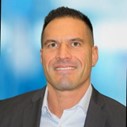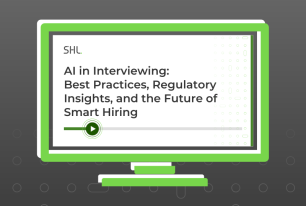Debunking the Myths: Why Structure Doesn’t Kill Authentic Conversations
Many hiring managers fear that structured interviews will feel robotic and impersonal. The truth? Structure enhances conversations, keeps interviews focused, and leads to better hiring decisions. Here we debunk five myths around interviews and why structured interviews aren’t about restricting dialogue but are a smarter way to make it more meaningful, fair, and effective.
Share
Structure Sparks Better Conversations, Not Rigid Ones
It’s easy to assume that an unstructured interview allows for more authentic, free-flowing conversations while still be effective in making talent decisions, but when interviews lack structure, they become unpredictable, inconsistent, and ironically less natural.
Rather than making interviews robotic, interviews should be treated as an assessment, with a structured approach that brings clarity and confidence to both interviewers and candidates. A well-structured interview isn’t about following a strict script but about providing a useful guide that ensures the conversations stay on track and provides a natural flow that effectively assesses candidates and minimizes bias.
Debunking the Myths
Let’s examine five myths about traditional interviewing, the challenges they create for the business, and how HR teams can deliver better results.
Myth #1: Interviewing is an art not a science
Many interviewers rely on gut-instinct —preparing questions on the spot without any guidance and relying on experience or intuition to gauge a candidate’s potential. While intuition plays a role in decision-making, relying too heavily on “gut feel” introduces unconscious bias and interviews become unfocused, resulting in unclear questions and missed opportunities to evaluate critical skills.
Reality: A structured approach, where every candidate is asked the same job-relevant questions and evaluated against consistent criteria, significantly improves hiring accuracy. Interviews are based on the skills that matter, streamlining preparation and execution. Real-time guidance can help keep the interviewer on track, creating efficient, valuable conversations, saving time and effort.
Myth #2: If someone interviews well, they’ll perform well in the role
Some candidates are naturally charismatic and can handle interviews with confidence and ease. Others, who may be equally or more qualified, might struggle with nerves or be less comfortable with self-promotion and selling themselves. Unfortunately, traditional interviews tend to reward confidence and performance over job capability.
Reality: Our recent research into talent data showed that adding structure to interviews, increases predictive power, compared to unstructured interviews. This means that they are much more likely to improve hiring accuracy and predict if your candidate is likely to succeed in the role.
Myth #3: Clever interview tricks reveal true character
Some interviewers believe that unconventional questions or surprise tests – like the now-infamous "water test," where a candidate is judged on whether they return a glass after being offered a drink – reveal hidden traits about a person. These techniques are often gimmicks. Not only can they create unnecessary stress and confusion for candidates, but they are also extremely unlikely to predict an individual’s performance or potential in the job.
Reality: Candidates perform better when questions are predictable, relevant, and job specific. This encourages deeper responses that provide more valuable insights and create a fairer, more inclusive experience for all candidates.
Myth #4: Candidates prefer relaxed conversations over structured interviews
While relaxed discussions might seem more comfortable for a candidate, they introduce interviewer bias, lack consistency and make it difficult to compare candidates or assess true job fit. Without guidance, there is often awkwardness trying to maintain a productive conversation, increasing the potential to mislead, or offend.
Reality: Standardized interview structures do not mean one-size-fits-all. Structure can still allow for job-specific customization, ensuring the right balance of structure and relevancy. It enables a transparent process with structured post-interview feedback to leave a positive, professional impression, strengthening the employer brand and resulting in higher acceptance rates.
Myth #5: The interview process doesn’t need data
Without insights backed by objective data, interviews and hiring decisions are highly subjective—HR teams are unable to track patterns, measure effectiveness, or demonstrate the ROI of their talent acquisition strategy. This lack of transparency also results in missed opportunities to measure what’s working, what’s not, and how to improve the interview process.
Reality: Adding structure means results from interviews are consistent and comparable. A consistent scoring guide makes hiring decisions simpler, more objective and data-driven, reducing mismatches and resulting in hires that perform better in the short- and long-term. Interview analytics can be used to continuously refine your hiring process.
Organizations don’t have to choose between great conversations and great hiring decisions—they can have both.
Learn how to apply structure, scoring, and analytics to make every hiring decision fair and data-driven with our latest guide, From Process to Practice: A Formula for Interviewing Success.









